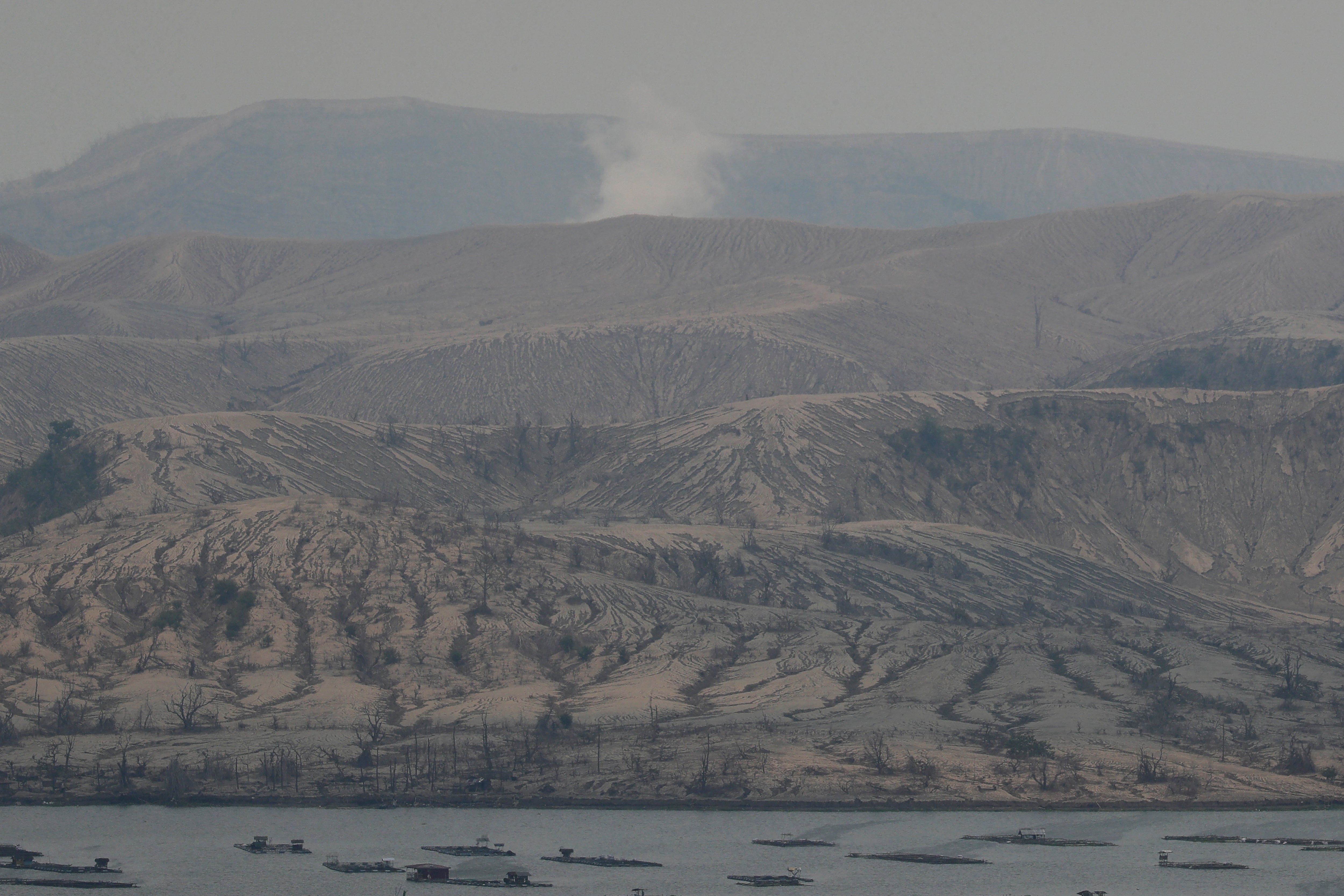Gases from Philippine volcano sicken dozens of children, prompting school closures in nearby towns
Smog containing gases from a restive Philippine volcano has sickened dozens of students and prompted 25 nearby towns and cities to shut their schools as a health precaution

Your support helps us to tell the story
From reproductive rights to climate change to Big Tech, The Independent is on the ground when the story is developing. Whether it's investigating the financials of Elon Musk's pro-Trump PAC or producing our latest documentary, 'The A Word', which shines a light on the American women fighting for reproductive rights, we know how important it is to parse out the facts from the messaging.
At such a critical moment in US history, we need reporters on the ground. Your donation allows us to keep sending journalists to speak to both sides of the story.
The Independent is trusted by Americans across the entire political spectrum. And unlike many other quality news outlets, we choose not to lock Americans out of our reporting and analysis with paywalls. We believe quality journalism should be available to everyone, paid for by those who can afford it.
Your support makes all the difference.Smog containing gases from a restive Philippine volcano sickened dozens of students and prompted 25 towns and cities to shut their schools on Friday as a health precaution, officials said.
There was no imminent threat of a major eruption of Taal Volcano, which authorities said remains at a low level of unrest in Batangas province south of Manila. But they said its emission of sulfur dioxide-laden steam in recent days caused skin, throat and eye irritation for at least 45 students in nearby towns.
Classes were suspended in 25 towns and cities in Batangas to keep students safely at home. Some schools resumed online classes and home learning that were in wide use at the height of the coronavirus pandemic, officials said.
Smog has also been reported in Manila north of Taal in recent days, but the Philippine Institute of Volcanology and Seismology said it was largely caused by vehicle emissions and not the volcano.
Taal, one of the world’s smallest volcanoes, is among two dozen active volcanoes in the Philippines, which lies along the Pacific “Ring of Fire,” a seismically active region that is prone to earthquakes and volcanic eruptions.
The 311-meter (1,020-foot) volcano sits in the middle of a scenic lake and is a popular tourist attraction about 60 kilometers (37 miles) south of Manila.
Taal erupted in January 2020 with a massive plume of ash and steam that prompted the evacuation of tens of thousands of people and the closure of Manila’s international airport.